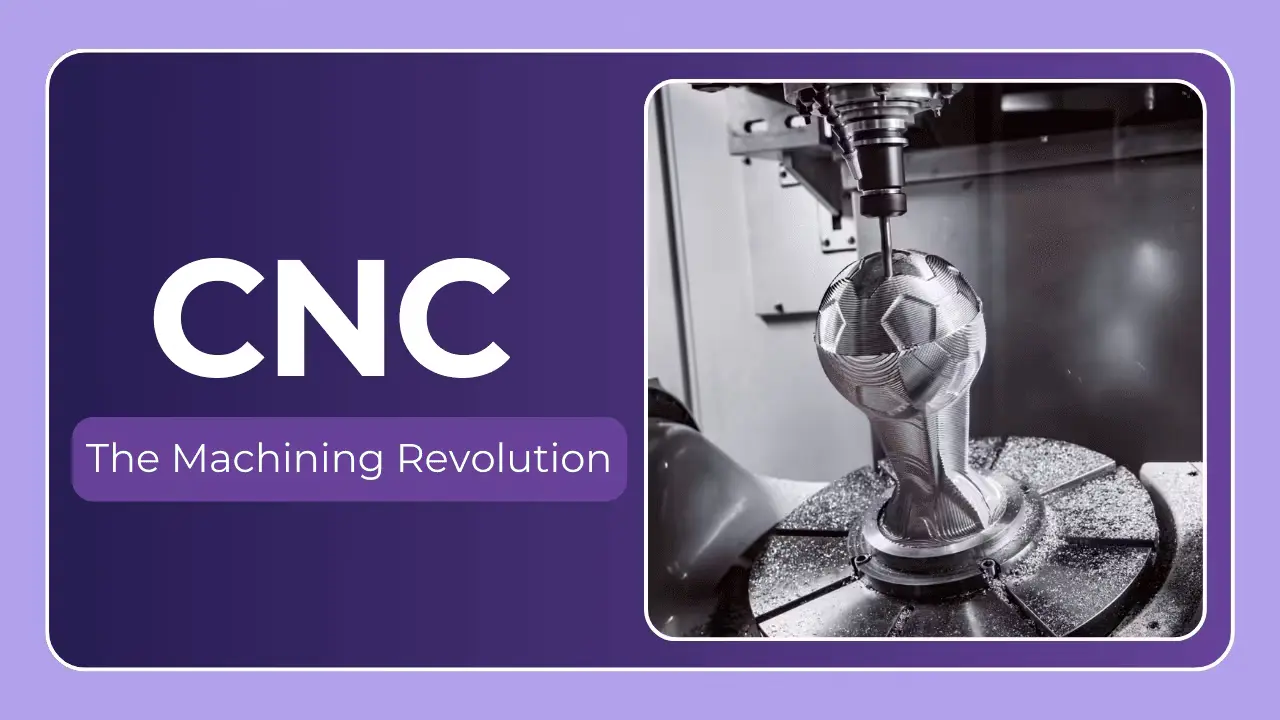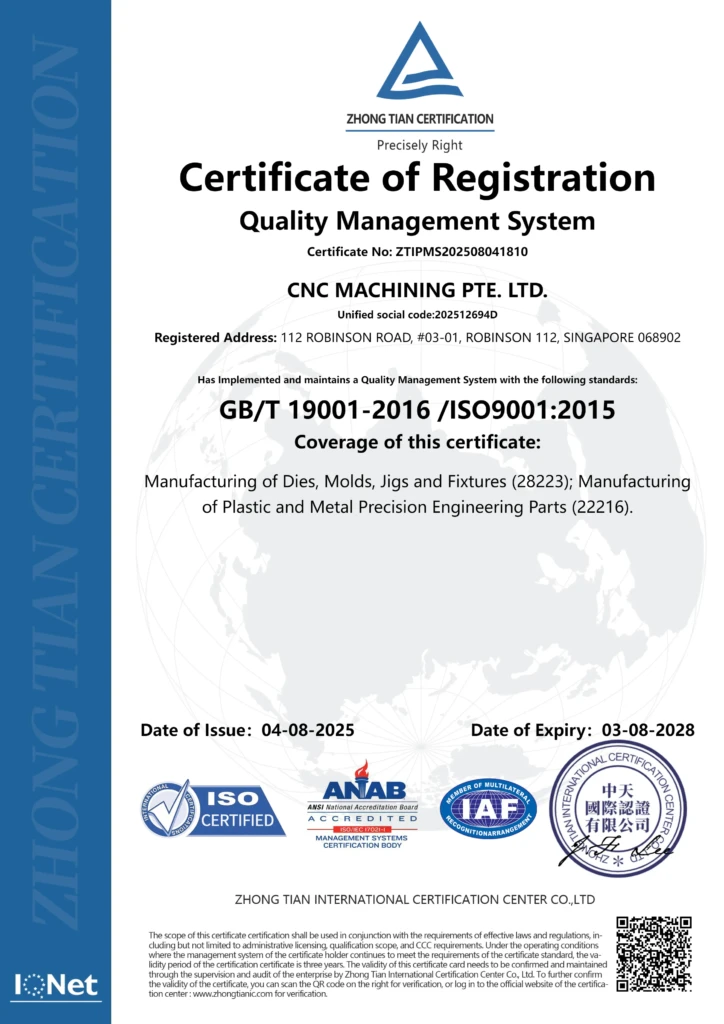Diving into the World of CNC Machining: A Comprehensive Guide
In today’s manufacturing landscape, precision, speed, and repeatability are paramount. That’s where Computer Numerical Control (CNC) machining comes in. It’s a cornerstone of modern production, enabling the creation of complex parts with incredible accuracy. But what exactly is CNC machining? This guide will break down the basics, explore the processes, materials, benefits, and what to consider when choosing a CNC machining partner – like CNC MACHINING PTE. LTD in Singapore for your five-axis machining needs.
What is CNC Machining?
At its core, CNC machining is a subtractive manufacturing process. This means a piece of material is cut away to create the desired shape, as opposed to additive processes like 3D printing which build up material. The crucial difference between traditional machining and CNC machining lies in the control system. Traditional machining relies on a skilled operator manually controlling the tools. CNC machining, however, utilizes pre-programmed computer instructions to guide the cutting tools. These instructions, written in a programming language called G-code, dictate the precise movements of the machine.
Think of it like this: a skilled craftsman can create beautiful work by hand, but a CNC machine, guided by a precisely crafted program, can replicate that work flawlessly, repeatedly, and often at a faster rate.
The CNC Machining Process: From Design to Finished Part
The journey from concept to finished part in CNC machining typically involves these steps:
- Design (CAD): It all starts with a digital design, usually created using Computer-Aided Design (CAD) software. This provides the blueprint for the part. Popular CAD software includes SolidWorks, AutoCAD, Fusion 360 and CATIA.
- Conversion to CAM: The CAD design is then imported into Computer-Aided Manufacturing (CAM) software. CAM software translates the design into the G-code instructions the CNC machine understands. This involves defining toolpaths, cutting speeds, feed rates, and other machining parameters.
- Machine Setup: The raw material is secured to the CNC machine’s worktable. Proper fixturing is crucial for accuracy and stability. The correct cutting tool is selected and loaded into the machine’s spindle.
- Machining: The CNC machine executes the G-code program, moving the cutting tool along the pre-defined toolpath to remove material.
- Post-Processing (Optional): Often, parts require finishing operations like deburring, polishing, plating, or heat treatment to meet final specifications. This is where a full-service provider like CNC MACHINING PTE. LTD can offer valuable expertise.
- Quality Control: Each part is meticulously inspected using tools like calipers, micrometers, and coordinate measuring machines (CMMs) to ensure it meets the required tolerances.
The Primary CNC Machining Processes
Several different CNC machining processes exist, each suited for specific applications and materials. Here’s a breakdown of the most common:
| Process | Description | Common Materials | Typical Applications | Advantages | Disadvantages |
|---|---|---|---|---|---|
| Milling | Uses rotating multi-point cutting tools to remove material. Can create a wide variety of shapes. | Aluminum, Steel, Titanium, Plastics | Complex shapes, pockets, slots, contours | Versatile, good surface finish | Can be slower for deep cavities |
| Turning | The workpiece rotates while a single-point cutting tool removes material. Ideal for cylindrical shapes. | Aluminum, Steel, Stainless Steel, Brass | Shafts, screws, bolts, cylinders | High precision, fast cycle times | Limited to rotational symmetry |
| Drilling | Creates holes in the workpiece using rotating drill bits. | Any machinable material | Holes, fasteners, assemblies | Simple and efficient for hole creation | Limited to cylindrical hole shapes |
| Grinding | Uses abrasive wheels to remove small amounts of material, achieving extremely high precision and surface finish. | Hardened Steel, Ceramics, Tungsten Carbide | Precision components, tool and die making | Extremely high accuracy, excellent surface finish | Slow process, tool wear |
| EDM (Electrical Discharge Machining) | Uses electrical sparks to erode material. Can create complex shapes in hard materials. | Hardened Steel, Titanium, Exotic Alloys | Mold and die making, aerospace components | Machining of very hard materials, complex geometries | Slow process, can leave a heat-affected layer |
Materials Commonly Machined with CNC
CNC machining’s versatility extends to a vast array of materials:
- Metals: Aluminum, Steel (various alloys), Stainless Steel, Titanium, Brass, Copper, and more. CNC MACHINING PTE. LTD excels in handling challenging alloys.
- Plastics: ABS, Acrylic, Delrin, Nylon, Polycarbonate, PTFE (Teflon).
- Composites: Carbon Fiber, Fiberglass, and other reinforced polymers.
- Wood: While less common, CNC machining can also be used on wood for intricate designs.
The Benefits of CNC Machining
Why has CNC machining become so dominant in manufacturing? The advantages are compelling:
- Precision & Accuracy: CNC machines deliver incredibly tight tolerances, crucial for critical applications.
- Repeatability: Once programmed, a CNC machine can consistently produce identical parts, with minimal variation.
- Speed & Efficiency: Automated operation allows for faster production times compared to manual machining.
- Complexity: CNC machining can create incredibly complex geometries that would be impossible or impractical to manufacture by hand.
- Scalability: Easily scale production from prototypes to large-volume runs.
- Reduced Labor Cost: Automation reduces the need for highly skilled manual labor.
Choosing the Right CNC Machining Partner: Key Considerations
Selecting the right CNC machining provider is critical for project success. Here are some factors to consider:
- Capabilities: Does the provider offer the processes needed for your project (milling, turning, etc.)? Do they specialize in the materials you require? CNC MACHINING PTE. LTD specializes in five-axis machining, opening up possibilities for complex geometries.
- Equipment: State-of-the-art equipment ensures precision, efficiency, and the ability to handle a wide range of projects.
- Experience & Expertise: Look for a provider with a proven track record and a team of experienced machinists and engineers.
- Quality Control: A robust quality control system is essential for ensuring parts meet your specifications.
- Turnaround Time: Understand the provider’s lead times and capacity. Fast turnaround is crucial for time-sensitive projects.
- Cost: Obtain quotes from multiple providers and compare pricing, but don’t solely base your decision on cost. Value, quality, and reliability are paramount.
- Post-Processing Services: Can the provider handle finishing operations like deburring, polishing, plating, or heat treatment?
The Future of CNC Machining
CNC machining isn’t static. Innovation is constantly pushing the boundaries. Trends to watch include:
- Multi-Axis Machining: Machines with 5-axis or more capabilities allow for even more complex geometries and reduced setup times. This is where CNC MACHINING PTE. LTD’s expertise shines.
- Automation & Robotics: Increased automation is streamlining the machining process and improving efficiency.
- Digital Twins: Creating virtual replicas of CNC machines to optimize programs and predict performance.
- AI-Powered Machining: Utilizing artificial intelligence to analyze data and optimize machining parameters in real-time.
Conclusion
CNC machining is a transformative force in modern manufacturing, offering unparalleled precision, efficiency, and versatility. Understanding the basics of the process, the types of machining available, and the key considerations when choosing a partner is vital for success. Whether you’re creating prototypes, low-volume production runs, or high-volume parts, CNC MACHINING PTE. LTD in Singapore provides the advanced five-axis machining capabilities, expertise, and comprehensive services to bring your designs to life with precision and reliability. Customize your precision parts now at the best price! Don’t hesitate to reach out and discuss your specific project requirements— we’re here to help solve your metal parts manufacturing problems.




